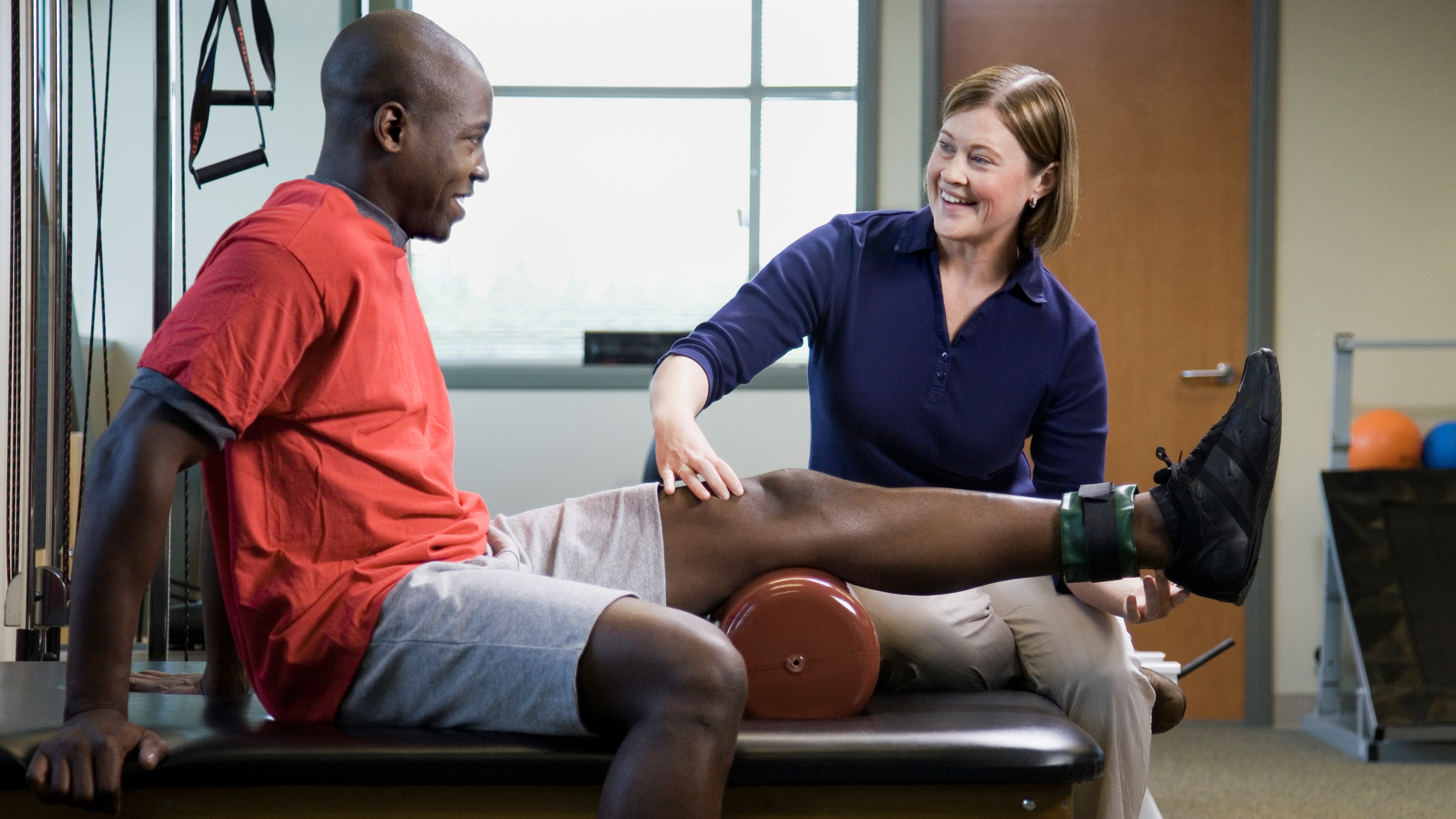Physical therapy vs chiropractor: who should you see?
We speak to two health professionals to determine the key differences between physical therapy vs chiropractor

Injuries. They’re not exactly an inevitable part of outdoor adventure, but we’d be lying if we didn’t admit that the two often go hand-in-hand. Take me, for example. I’ve been outdoorsy going all the way back to my adolescence, and nearly 30 years of hiking, skiing, biking and rock climbing has earned me two knee surgeries, one separated shoulder and countless tweaky backs, hamstrings and hips that took weeks or months to resolve. So let’s just say I’m no stranger to musculoskeletal therapies like physical therapy and chiropractic.
In fact, I shiver to think about the hours I’ve tallied up on a physio or chiropractor’s bed getting worked on, never mind the dollars. But I thank my lucky stars that such health practitioners exist, or I don’t think I’d have spent a whole lot of time in my hiking boots or my trail running shoes in recent years. If you’ve recently acquired an achy back, strained muscle, ligament or tendon, or even just a phantom pain that you can’t totally describe, there’s a good chance you’re considering a visit to your local physical therapist or chiropractor. But how do you know which to go to? Do you just head to your friend Helen’s favorite therapist that she swears fixed her sciatica? Should you shell out for a pricey MRI first to find out exactly what’s going on?
The difference between physical therapy vs chiropractor can be a bit mysterious to a lot of active folks, and it can be important to know what you need to get to the bottom of things quickly, so I recently spoke to a professional from each field to help you get to the bottom of the differences and similarities between the two.

What is the difference between a physical therapist and a chiropractor?
Physical therapy and chiropractic are two forms of complementary and alternative healthcare that focus on the musculoskeletal system. Both a physical therapist and a chiropractor are trained to help you manage pain and stiffness using non-surgical techniques.
My dozens of hours working with PTs have incurred a really wide variety of treatments and approaches. After an initial assessment, you might find that a PT performs manual manipulations, which could feel a lot like sports massage, or you might spend an hour learning how to do exercises to help improve your mobility and relieve pain symptoms. Some PTs also perform more specialty techniques, such as dry needling, where acupuncture needles are inserted into trigger points in your muscle and, if you’re anything like me, electric impulses may be sent through them to try to wake up the muscle (ouch).
My visits to the chiropractor have always involved the physical manipulation that you probably think of when you think of a chiropractor – they’re called adjustments – where manual pressure is applied along various spots on the spine to produce a cracking or popping sound (known as “cavitation”) that relieves pressure and pain. However, this treatment was usually performed in conjunction with other modalities, such as sports massage and cupping. So already, the line seems a little blurry, doesn’t it? Carrie Eckenhoff of Altius Physical Therapy and Wellness in Vail, CO is a fellowship-trained and board-certified orthopedic specialist who is quick to reassure me that my confusion is warranted.
“There’s a lot of overlap,” says Eckenhoff, adding, “I don't want to generalize too much because not not all chiropractors aren’t the same just like not all PTs are the same, but one of the big differences seems to be that a physical therapist addresses issues with the whole musculoskeletal system versus a chiropractor, who seems to deal more with issues related to the spine with a specific toolbox.”
All the latest inspiration, tips and guides to help you plan your next Advnture!
That toolbox largely amounts to those adjustments that chiropractors perform, and they often have a wider array of them than a PT. And though she’s quick to qualify (and I’ve had first hand experience of this) that some chiropractors will perform adjustments elsewhere in the body, they traditionally focus on the spine. Meanwhile, she explains, PTs can perform some joint manipulations, but tend to do so all over the body.

So the area of the body that the therapist is focusing on is one potential difference between the two disciplines, but is there anything else to distinguish the two?
According to Dr Sarah Kucera, a Kansas City-based chiropractor, who also concedes that the “lines are blurred these days,” another difference that you’re likely to encounter is active versus passive care.
“Most chiropractors are doing something to you, whereas PTs ask you to do the work,” she explains. So in addition to a focus on the spine, a chiropractor is likely to perform their technique on you while you relax as much as you can, whereas in a visit to the PT’s office, you might find that you’re the one doing all the work.
“In general physical therapists tend to skew more towards prescribing exercise and take a more active approach and that might be one bigger difference,” agrees Eckenhoff.
So the differences can be roughly distilled down to area of the body and active versus passive treatment, but beyond that, you might see a lot of overlap between physical therapy and chiropractic treatment.
“Though each PT and chiropractor works in a different way and has different focus, the joint and soft tissue manipulation complements the corrective exercises that a PT uses. There is crossover, in that many chiropractors secondarily incorporate and educate on exercises and posture, and some PTs do manipulation,” says Kucera, adding, “I think it’s important to note that the two modalities complement one another quite well.”

Is it best to see a physio or chiropractor for back pain?
To answer this question, it’s really important to acknowledge that not all back pain is created equally. However, because of chiropractic’s focus on the spine, there’s a good chance you’re reading this article because you yourself have been experiencing back pain, and in this instance, both therapists I spoke to concur that if you’re experiencing acute pain, you might respond better to manual manipulation.
“You’ll want some passive care initially so you can move, then the guidance to move in a way that supports health,” explains Kucera. In other words, if you’re experiencing a specific set of characteristics – which Eckenhoff explains include recent onset acute low back pain and stiffness without lower extremity pain – you might want to see someone who can give you a manual adjustment first to relieve the pain and get moving again, then see a PT to help you avoid a recurrence through better movement patterns.

That said, there are occasions when Eckenhoff might steer a patient with back pain away from anyone focusing on manual manipulations, which are not always appropriate, so it’s important to her that she knows the chiropractor in question before referring a patient.
“An example of when I wouldn't want someone to see a chiropractor who I didn't know would be someone who's having someone who's having radiating pain down their down their legs in addition to their back pain, because I wouldn't want that person to have an adjustment without a careful workup of what's going.”
Similarly, she’s extremely cautious with manual manipulations for neck pain.
“Neck pain can come from a lot of things, so one example is a cervical artery problem where you can get headaches and neck pain but a manipulation can be really dangerous if that's the underlying cause.”
In such a scenario, it’s a good idea to visit your doctor for a referral, and make sure you trust the therapist you’re seeing.

Physical therapy vs. chiropractor: who should I see?
A good chiropractor or PT would of course need to assess you first before coming to any conclusions about treatment, but in deciding where to go, one of the biggest questions to answer for yourself is whether your pain is acute or chronic.
“I think of chiropractors as treating acute pain more proficiently, whereas PTs will be very efficient in helping problems from coming back, or assisting in the recovery from a condition,” advises Kucera, adding that, again, the area of your body where you’re experiencing the pain will be another deciding factor.
“I would seek out a chiropractor for an initial assessment regarding back and neck issues (acute especially), then work with a PT to keep the issue from recurring.”
From Eckenhoff’s point of view, if you find yourself working with both a PT and a chiropractor, she advises you to make sure that they are working together.
“I had a patient recently who had an issue that I wasn't sure if there was a something underlying going on and she was also seeing a chiropractor. He was careful with her and didn't do any manipulation to her neck and we worked together with this patient treating different things, so I think there's a lot of opportunity for collaboration as well.”
Julia Clarke is a staff writer for Advnture.com and the author of the book Restorative Yoga for Beginners. She loves to explore mountains on foot, bike, skis and belay and then recover on the the yoga mat. Julia graduated with a degree in journalism in 2004 and spent eight years working as a radio presenter in Kansas City, Vermont, Boston and New York City before discovering the joys of the Rocky Mountains. She then detoured west to Colorado and enjoyed 11 years teaching yoga in Vail before returning to her hometown of Glasgow, Scotland in 2020 to focus on family and writing.

